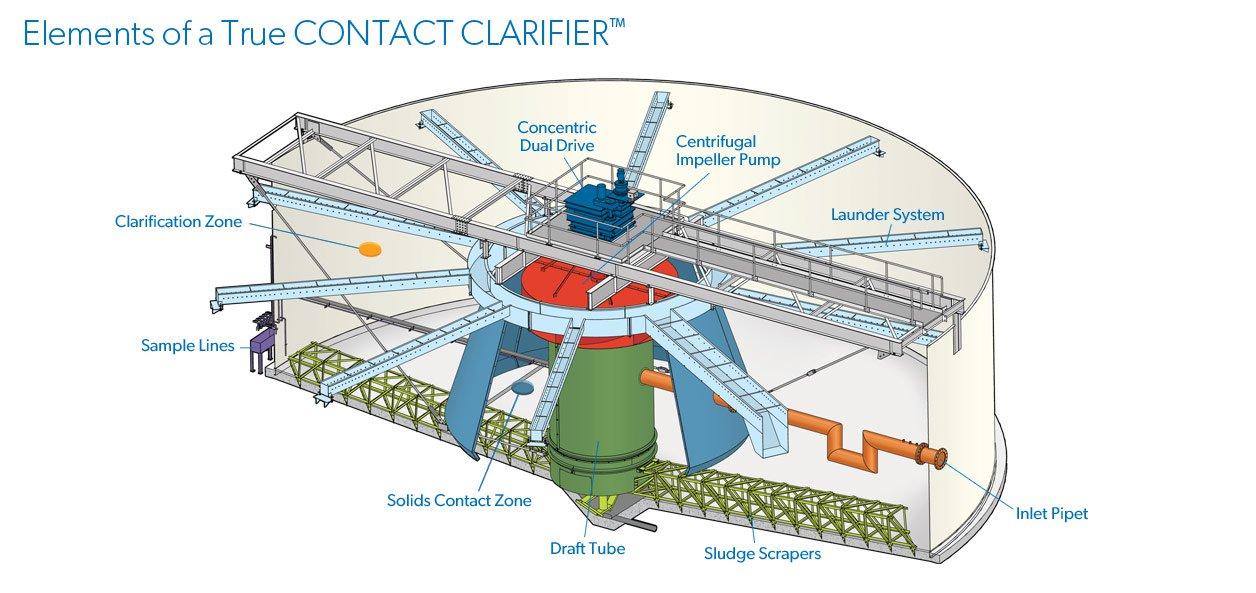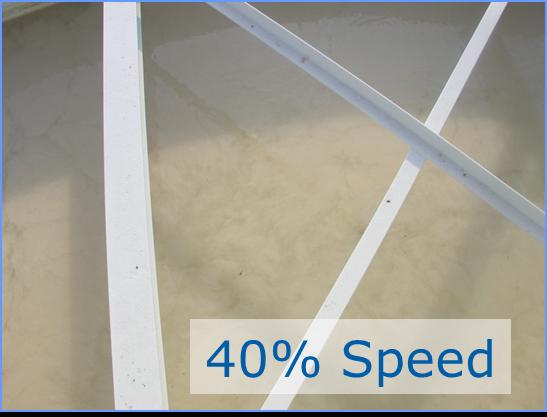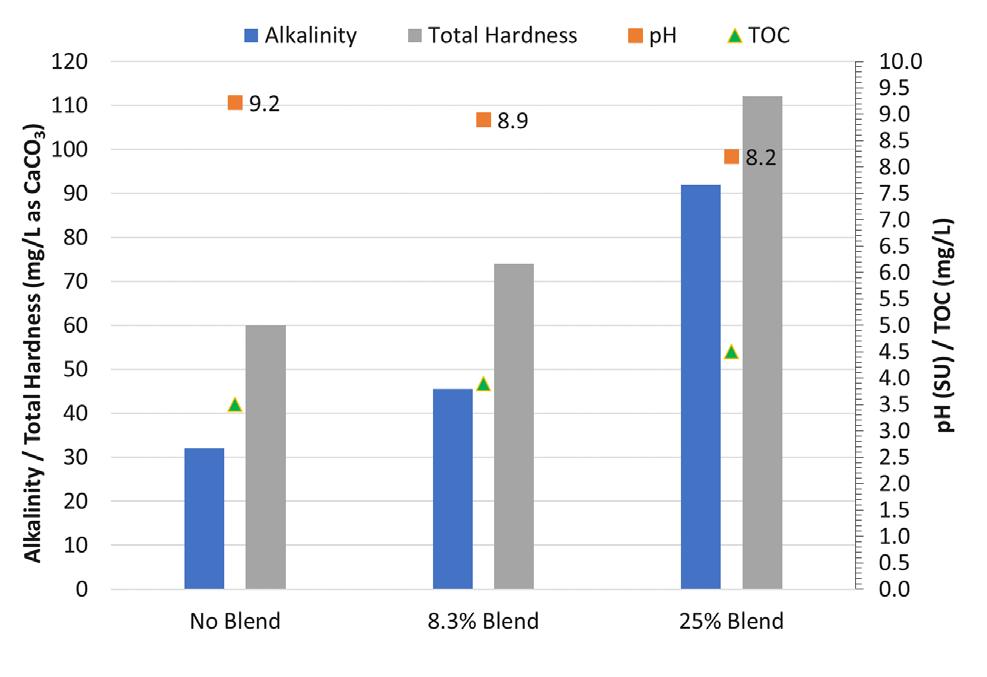
9 minute read
Lime Softening—the Forgotten Technology: Optimization Case Studies From South Florida—Tyler Smith, Vinnie
FWRJ Lime Softening—the Forgotten Technology: Optimization Case Studies From South Florida
Tyler Smith, Vinnie Hart, Jennifer Stokke Nyfennegger, Joseph Paterniti, Michael Low, and Juan Guevarez
Advertisement
Many water treatment plants (WTPs) throughout the state of Florida have been using lime softening, primarily for the removal of color, calcium hardness, and, to a lesser extent, magnesium hardness for decades. Many of these facilities are experiencing challenges with controlling the lime softening process due to aging infrastructure, loss of engineering/operational expertise, a shift in water quality goals, and solids handling challenges.
This article includes findings and recommendations from multiple case studies across south Florida, including the City of Boynton Beach (city), related to the optimization of the lime softening process leading to a reduction in chemicals and solids generation, as well as tools to help operators meet finished water quality goals and maintain a consistent water quality.
Lime Softening Chemistry
The primary purpose of lime softening is to reduce levels of calcium and magnesium from water. Typically, effluent total hardness goals range from 80 to 120 mg/L as CaCO₃. The softening process requires raising the pH high enough (≥9.5) that the conversion of bicarbonate to carbonate occurs and facilitates
Figure 1. Typical Cross Section of a Solids Contact Clarifier (modified from Suez Environmental) Tyler Smith, P.E., is a project engineer with Carollo Engineers Inc. in Phoenix. Vinnie Hart, P.E., is a project engineer with Carollo Engineers Inc. in Sarasota. Jennifer Stokke Nyfennegger, Ph.D., P.E., is a project engineer with Carollo Engineers Inc. in Denver. Joseph Paterniti, P.E., is utility director; Michael Low, C.Eng. M.I.Chem.E., is technical services manager; and Juan Guevarez, P.E., is water quality manager, with City of Boynton Beach.
the precipitation of calcium carbonate. The process of removing magnesium must occur at a higher pH (≥10.6) and is typically referred to as enhanced softening. Magnesium removal is not typically required in Florida due to the limited amount of magnesium in most source water and is therefore not extensively reviewed herein.
Softening for precipitation and removal of calcium requires elevated pH, which is typically accomplished by the addition of lime (Equation 1). The softened water can then be stabilized through recarbonation (the process of adding carbon dioxide) to form, then convert, carbonate to bicarbonate and minimize excessive calcium carbonate precipitation in downstream processes.

Equation 1: Ca(HCO3 )2 + Ca(OH)2 → 2CaCO3 i (solid) + H2O pH≥9.5
As shown, this process relies heavily on the presence of carbonate, which is one of the species that composes alkalinity. If the amount of calcium exceeds the amount of alkalinity in a water source (this can be compared easily when everything is reported as CaCO₃), the softening reaction will run out of carbonate before complete calcium removal and can lead to low finished water alkalinity. This is undesirable due to the lack of buffering capacity and the potential for nitrification to depress pH in the distribution system and resulting corrosive water.
Configuration and operation of the solids contact clarifier (SCC) have a significant impact on overall plant performance. Figures 1 and 2 show a typical cross section of a SCC for two different manufacturers. In general, influent raw water flow is introduced into the center cone (area under the hood) where it’s mixed by a mechanical mixer with lime and previously formed recirculated solids, which allows for the primary mixing and a surface for the softening reaction to occur. The mixer keeps the solids in suspension and resuspends the solids that settle in the return flow zone and where the rake (if included) can transport them back into the center cone, where they can be resuspended. Polymer can be added in the primary or secondary mixing zone to encourage solids agglomeration via bridging.
The upflow rate (also called rise rate) and the solids recirculation capacity are of primary importance to a well-functioning SCC. The 2012 Ten States Standards recommend a maximum upflow rate for SCCs used for softening of 1.75 gal per minute (gpm)/ft2; however, historically, many WTPs in Florida can operate at higher upflow rates (Figure 3), which provides an opportunity to increase process capacity. Higher rates are acceptable because these installations, like most in Florida, only remove calcium carbonate and are not influenced by magnesium hydroxide, which requires lower rise rates. (For example, the steel industry precipitates magnesium hydroxide only and utilizes rise rates of 0.2 gpm/ft2 . This demonstrates the poor settleability of magnesium hydroxide.)
The recirculation of solids, which is the single most important factor, and a high inventory of solids should be maintained to provide a large surface area for the precipitation of calcium carbonate (the calcium carbonate reaction has a preference for precipitation on surfaces). Increasing the recirculation ratio (via increasing mixing speed and corresponding pumping capacity) lifts solids off the bottom of the SCC, promotes the formation of larger and more-uniformly-sized particles that settle rapidly, and prevents precipitation of fine calcium carbonate particles in the bulk liquid, which results in poor settled water turbidity and carryover to downstream processes.
Figure 4 shows the center cone solids for two mixing speeds. In this case, 100 percent speed resulted in improved settled water quality, less torque on the rake, and provided good mixing for the representative center sampling.
One misconception with SCC operation is that elevated rake torque levels should be
Figure 3. Upflow Rates for Solids Contact Clarifiers Across Florida



Figure 4. Center Cone Solids at Varying Mixer Speeds (Recirculation Ratios)
mitigated by wasting solids. This can lead to Water Quality Considerations excessive wasting and a reduction in the solids inventory, which will subsequently reduce and Lime Dose the settleability of the solids and increase the An SCC is a unit process specially designed settled water turbidity. Instead, utilities should for the softening reaction and works on the consider increasing the speed of the turbine or theory of maintaining a solids inventory to center cone mixer. By increasing the speed, the provide a surface area for the softening reaction solids are lifted off the rake and the torque is to occur. Influent water quality and target pH significantly reduced, without losing the solids of the lime softening process influence the inventory. operational approach of an SCC. The SCC
Part of the key to minimizing rake torque operation historically needed to consider the is to build larger solids, which will settle out desired finished water hardness, amount of more quickly in the clarification portion of the magnesium hydroxide precipitation, and color basin. Solids that settle out closer to the center removal goals. Many Florida utilities have of the rake will result in less torque (torque is installed color removal technologies, which the load times the moment arm—better settling allow a “decoupling” of hardness removal from decreases the moment arm). color removal and also allow for reconsideration of overall goals of the SCC. Continued on page 46 Florida Water Resources Journal • November 2020 45
Continued from page 45
For example, the city installed a magnetic ion exchange (MIEX) system as a pretreatment to its lime softening process at its East WTP. The MIEX system removes organic compounds and the corresponding color from the raw water (from an average color of 27 color units reduced to an average of four color units) before softening. This allows the city the ability to dial in a finished water hardness (instead of softening the entire flow stream to achieve color removal) and potentially bypass a portion of the flow around the softening process without sacrificing finished water color goals.
The city retained Carollo to help optimize the lime softening process to minimize chemical and residuals disposal costs. Benchscale testing was completed using a standard jar test apparatus with six square, 2-liter jars for a number of testing conditions. Figure 5 shows the water quality of existing (full-scale) operations of the city’s East WTP with no blend, compared to bench-scale results for two potential blends of 8.3 and 25 percent (meaning that 8.3 to 25 percent of the raw [MIEX-treated]
Figure 5. Blended Water Quality Results From East Water Treatment Plant (City of Boynton Beach)


water would be bypassed around the SCCs and blended with lime-softened water).
As shown, higher alkalinity and total hardness goals can be achieved with blends up to 25 percent, with minimal inpact on finished water total organic carbon (TOC). Due to concerns with the Langlier Saturation Index (LSI)/calcium carbonate precipitation potential (CCPP) of the 25 percent blend, the city felt most comfortable wth the 8.3 percent blend. The percent bypass of the softening system directly correlates to reduction in lime use and solids production/handling costs. The pH range results were within the acceptable range for this facility.
Some utilities in Florida have witnessed continued softening through the processes downstream of SCCs, including filtration, which can limit filter run times, reduce overall water efficiency, change media characteristics, and cause damage to underdrains.
A utility located in south Florida has experienced this since it currently adjusts pH with carbon dioxide after filtration. It was determined that the filter influent and effluent pH before carbon dioxide addition were relatively high. Since the process water pH is not adjusted before filtration, it’s likely that the softening reaction is still occurring, resulting in calcium carbonate deposition onto the filters. This theory was substantiated by the fact that filter influent pH is ~10.6 and effluent pH is ~8.9-9.3, thereby showing that the softening reaction is still occurring through the filters since the pH decreases (e.g., due to precipitation of calcium carbonate and resulting in a reduction in dissolved carbonate and pH shift).
Utility staff suspected that there was significant underdrain clogging due to calcification, resulting in ineffective backwashing. As calcium carbonate precipitates in the filter, the headloss through the media and underdrain increases, thereby reducing filter run times. It was recommended that the location of the carbon dioxide injection be moved to just before filtration to lower the influent filter pH, stop the softening reaction, and prevent calcium carbonate deposition onto the filters and in the underdrain system.
The American Water Works Association (AWWA) recommends that filters remove no more than 10 mg/L as CaCO₃ of hardness across the filters, as this is indicative of detrimental calcium carbonate precipitation in the filters. It’s also the experience of the authors that a filter that has experienced severe precipitation of calcium carbonate can be remediated by processing settled water that is aggressive, allowing for a slow redissolution of Continued on page 48










